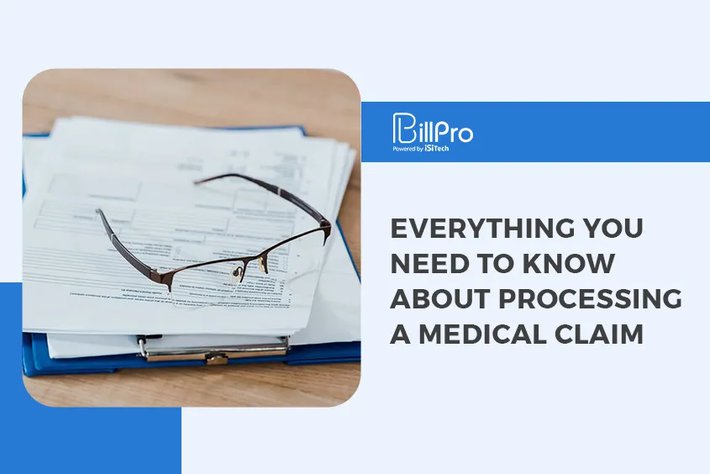A medical claim may seem like a fairly simple document, but the path to creating a finalized claim can be difficult. If you work in the medical billing field, you know how important it is to create a proper claim. The claim is created by billers at a healthcare office and then sent to an insurance company who determines how much of the service is covered. Then, the patient is billed for the remaining amount. There are a variety of details that go into each part of this process, so it’s important to have a handle on every step to yield the best results. If you’ve just sent off a claim for processing, it’s important to understand what happens from there. We took a look at each step and broke down the details.
The Insurance Company is Billed
After an appointment is complete and a team of medical billers have created a claim, that claim is sent off to the patient’s insurance provider for review. This bill includes the price of all services the patient received, minus any copays paid at the time of the check in.
The Insurance Provider Reviews the Claim
Once the claim is in the insurance provider’s hands, a certified claims processor reviews the claim to verify its accuracy. They compare it to the patient’s insurance plan to decide which services are covered and which are not, and also ensure that the information on the claim correctly matches the data they have on file.
The Insurance Provider Makes a Payment
If the services received are covered under the patient’s insurance plan, the insurance company pays their portion of the claim. Depending on the medical service and the patient’s plan, the claim will either be paid in full or in part. If there is a balance remaining, that amount is billed to the patient.
The Amount is Validated
When the amount covered and owed is determined, it is validated and then applied to deductible and out-of-pocket totals. Those are updated immediately so that the remaining balance reflects the patients true billed amount.
The Patient Receives an Explanation of Benefits

Before a patient receives the final bill, they’ll receive a document known as the explanation of benefits. This document details the list of services received, how much the insurance provider covered, how much the provider paid, and the amount left that the patient is responsible for. An explanation of benefits looks very similar to a bill, however, there is no form to fill out and return with a check. An explanation of benefits is particularly useful for patients to review before they receive their final bill, so they can confirm that the information is correct and ask any questions ahead of the bill.
The Patient Receives the Final Bill
Some time after the explanation of benefits, the patient will receive a final bill from the insurance company. The bill will state the final amount along with a date that the payment is due. Once the bill is in the patient’s hands, they can make the payment whenever they want, as long as it’s within the specified timeframe.
Claim Rejections and Denials
Everyone involved in the claims process hopes that each claim will be met without error, however, that’s not always the case. If you find yourself facing a rejected or denied claim, don’t panic. There’s likely a solution to allow you to resubmit and find a clean claim in no time. The following are some of the most common reasons you may have a claim rejected or denied.
Incorrect Information
It’s not difficult to fill out a claim incorrectly. In fact, just one small piece of incorrect information can result in a rejection or denial. Incorrect information could be anything from a misspelled name to a wrong birthdate or incorrect insurance information. Any of these things on a claim will result in an error, but they can usually be fixed and resubmitted for approval again.
The Pre-authorization Step Was Skipped
Certain procedures require pre-authorization from the insurance company before they can be conducted. If this step is skipped and it turns out the service isn’t covered, patients could be looking at a bigger than expected bill.
The Claim Was Filed Late
Every claim has a deadline. If the claim is submitted after said deadline, it’s going to be denied. This may sound harsh, but claims typically have a deadline of 30 days or more, so in most cases there should be plenty of sufficient time to submit a claim.
Insurance Doesn’t Cover the Service
The reality of medical insurance is that it doesn’t cover everything. Sometimes a patient may need a service and have no choice but to go forward with it, but their insurance plan doesn’t cover it. If this is the case, the claim won’t be accepted.
Services Aren’t Deemed Medically Necessary
If an insurance provider doesn’t deem a particular service medically necessary, they may deny the claim. A patient and provider may be able to fight back in this case, depending on the situation.
Commit to Best Practice Billing
There’s no one-size-fits-all approach to billing, but when you have reliable billing software on your side, you can’t go wrong. If your New York billing operation is looking for an electronic solution, we’d love to schedule a free demo of our NY Medicaid billing software. Get in touch today!

 5/5 (1 vote)
5/5 (1 vote)
 226 views
226 views





